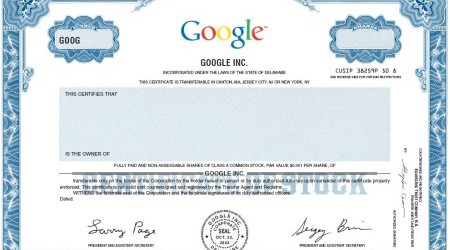When acquiring shares, new investors are often irritated by the concepts of nominal and market value. They may ask themselves where the exact difference lies and why the values sometimes differ considerably in individual cases. The following article is aimed at defining these two terms and clarifying their meanings and differences.
The nominal value of shares
Similar to banknotes, each security is marked with a certain value and the given amount represents the nominal value of the share. Furthermore, one share represents a proportion of the capital stock of the issuing company and therefore allows drawing conclusions about the amount of capital. To determine the capital stock, the number of shares issued by a company must be known. The issued securities are used for the emitter to raise equity capital.
The issuing stock corporation can determine the nominal value of its stocks, but is bound by paragraph 8 (2) of the Stock Corporation Act, which prescribes a minimum nominal value of one euro. The so-called issue below par is prohibited; the common rule is that shares are sold above the nominal value.
The calculation of the capital stock
The calculation of a company’s equity is linked to a simple formula. The nominal value of a share is multiplied by the number of securities issued. The result shows the capital stock of the stock corporation. If investors are interested in the nominal value of a share, they can simply divide the capital stock by the number of shares issued.
– As an example: A corporation issues 900 million shares with a nominal value of three euros each. Consequently, its capital stock can be set at 2.7 billion euros.
Furthermore, the nominal value of a share is the basis for the calculation of the dividend, whereby the market value is not taken into account:
– As an example: If a share has a nominal value of one euro and the issuing company determines a dividend of ten percent, one proportion is worth ten cents.
The term market value
The market value indicates the current price of a company share, which usually considerably exceeds the nominal value. The difference between nominal value and market value can also be understood as an added value generated on the stock exchange by supply and demand. The driving forces here are the business situation and the latest balance sheet of the issuing group. Depending on the quality of the data, the market value may be subject to great fluctuations, but these have no influence on the capital stock and thus on the nominal value of the share.
The market value is rather used to calculate the issuer’s market capitalization. Let me give you another example:
– The above-mentioned share with a nominal value of three euros is now listed at a price of 100 euros. If the market value is multiplied by the number of shares, the current market capitalization is derived. With 900 million shares, this would amount 90 billion euros.
Investors will find further details on this topic here. It is particularly important that the nominal value of a share remains the same from the date of its issue, although its market value is subject to fluctuations.
Market value vs. nominal value of a share,Anzeige




